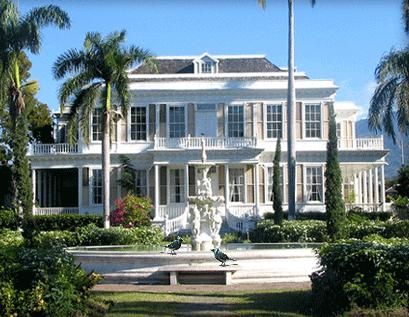
The Beginnings of Devon House
In the mid 17th century, Devon Penn was part of a 600-acre property awarded to Rev. John Zellers, a British minister. Some fifty years after that award, a rectory was constructed, and portions of that rectory are thought to remain as part of the existing Devon House mansion. However, it is the story of George Stiebel that has made Devon House famous.
The Story of George Stiebel
Born in the 1820s to a Jamaican housekeeper and a German Jew, George Siebel’s mixed ancestry brought him harsh treatment from his schoolmates. He left the classroom at the age of 14 to become a carpenter’s apprentice. At 19, Stiebel was instrumental in reconstructing the famous Ferry Inn, located between Kingston and Spanish Town, and in the 1840s, the young visionary entered the world of business.
With the help of his father, he purchased a ship and began transporting cargo between North and South America. Eventually, he added two more ships and expanded his business dealings to the West Indies. Caught in the Revolution that gripped Cuba during this time, Stiebel became involved with the lucrative business of gun trading and eventually landed in trouble with the law.
Stiebel married his long-time sweetheart, Magdalene Baker, in 1851, and together they had two children: a son, Sigismund, and a daughter, Theresa. His luck turned five years later when a storm destroyed his ships, with Stiebel on board one of them. He survived the storm with his money belt intact, however, and found refuge in Venezuela. He wasted no time going into business, purchasing a mule for transporting goods and becoming a peddlar. Siebel appeared to be truly blessed with the “Midas touch,” and he later invested in a goldmine, reaping huge profits in 1873.
The tragic death of his only son brought Stiebel back to Jamaica. Upon returning, he purchased 99 pieces of property, including two sugar estates, a wharf at Church Street, Great Salt Pond, and a cattle property named Minard, by Brown’s Town in St. Ann, where he built the family vacation home. He only limited his real estate purchases because of a law stating that it was illegal to own 100 properties.
Stiebel was officially recognized as Jamaica’s first black millionaire in the late 19th century, when he was one of three wealthy Jamaicans who constructed elaborate homes at the corner of Trafalgar and Hope Road, giving the area its designation as “Millionaires Corner.” Stiebel’s home was Devon House.
Stiebel lived happily at Devon House for the next decade with his wife and surrounded by his grandchildren. The family was famous for giving lavish parties for friends and family, which required a rather large staff. The servants’ quarters were located in the space now used as the property’s commercial complex.
Over time, Stiebel continued to suffer personal losses. His wife Magdalene died in October of 1892, and he later lost a grandson and his son-in-law, who had served as Mayor of Kingston. Devon House was eventually put up for sale.
Devon House After Siebel
In 1923, Devon House was purchased by Reginald Melhado, whose family added their own touches to the mansion with a collection of antique furnishings and a quiet lifestyle. However, the next family to call Devon House their home, however, did its best to continue Siebel’s legacy.
The Lindos brought vitality and pageantry back to Devon House. They resumed the fancy dinner parties for which they house was famous, and there were widely discussed within Jamaica’s local society. The owner, Cecil Lindo, died in 1960 at the age of 89. He left Devon House to his wife, Agnes, but she chose to live in New York instead of remaining at the mansion.
Developers planned to demolish Devon House and construct condominiums on the property, but while they were negotiating with Agnes Lindo, the Government of Jamaica discovered their plans and placed a restriction order on the property under the National Trust Act.
According to The Daily Gleaner of August 27, 1965, “The Hon. Edward Seaga has served an Interim Preservation Notice on the building known as Devon House…the finest 19th century residence remaining in the island…”
The English architect, Tom Concannon, who worked to restore other national monuments, including the Naval Hospital in Port Royal and the Rose Hall Great House in St. James, undertook the restoration of the Devon House mansion. Devon House officially opened as a public building on January 23, 1968.
Continuing Stiebel’s Legacy
Today, Stiebel’s legacy of hospitality lives on at the beautifully maintained Devon House, which was declared a national monument by the Jamaica National Heritage Trust in 1990. It currently promotes the development of authentic Jamaican arts, craft, education, entertainment, and food in a comfortable and safe environment.
Steeped in history, the commercial centre at Devon House offers a unique experience and is a great way to spend time with family and friends
Contact the Devon House Heritage Site at 929-6602 or visit their web site at www.devonhousejamaica.com.
The historical information in the article was provided by the Devon House Heritage Site.








